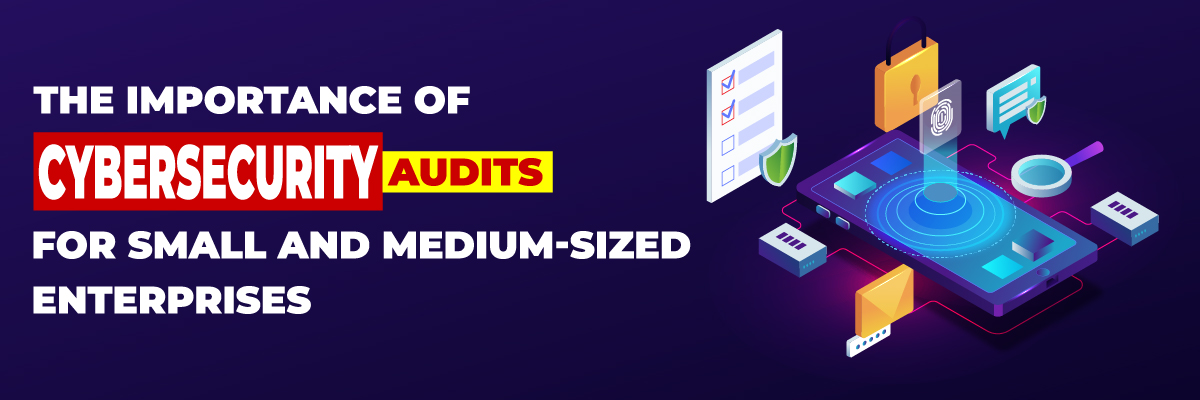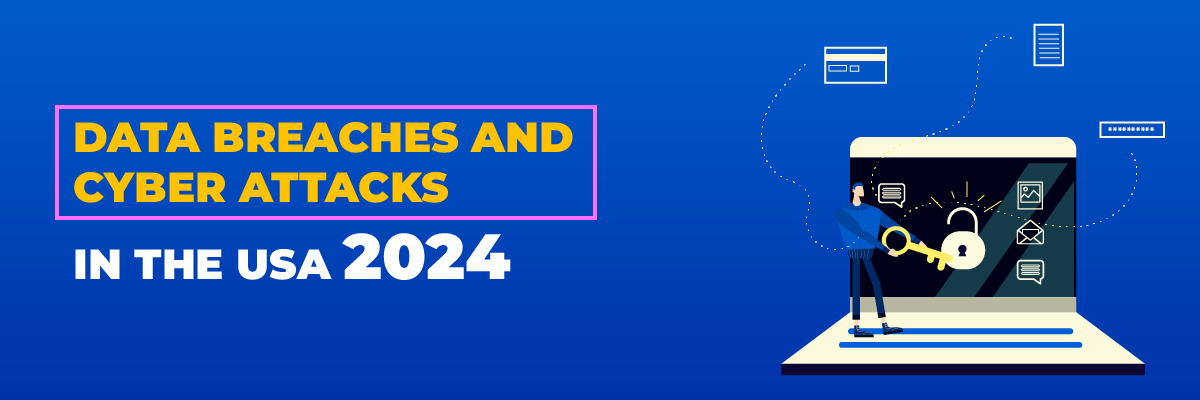How to Avoid Top Cybersecurity Threats in 2024

Top 10 Cybersecurity Threats in 2024 and How to Avoid Them
As the world becomes more interconnected and reliant on digital infrastructure, cybersecurity remains a critical concern for individuals, businesses, and governments alike. In 2024, cyber threats have become more sophisticated and pervasive, necessitating a proactive approach to safeguarding sensitive information. This article explores the top cybersecurity threats of 2024 and provides practical strategies to avoid them. We will also highlight how Protected Harbor, a leading Managed Service Provider (MSP) in the United States, stands out in the cybersecurity landscape.
1. Ransomware Attacks: The Ever-Growing Menace
Ransomware continues to be one of the most prevalent and damaging cyber threats in 2024. Cybercriminals deploy ransomware to encrypt victims’ data, demanding a ransom payment in exchange for the decryption key. This threat has evolved, with attackers now targeting critical infrastructure, healthcare systems, and even small businesses.
How to Avoid Ransomware Attacks
- Regular Backups: Ensure regular backups of critical data and store them in an isolated environment.
- Patch Management: Keep all software, including operating systems and applications, up to date to close vulnerabilities.
- Employee Training: Educate employees about phishing scams and safe email practices.
- Advanced Threat Detection: Implement advanced threat detection tools that can identify and neutralize ransomware before it causes harm.
2. Phishing and Social Engineering: Exploiting Human Weakness
Phishing remains a top cyber threat, with attackers increasingly using sophisticated social engineering techniques to trick individuals into revealing sensitive information. These attacks often appear as legitimate communications from trusted entities, making them difficult to detect.
How to Avoid Phishing Attacks
- Awareness Programs: Regularly educate employees on recognizing phishing attempts and other social engineering tactics.
- Email Filtering: Implement robust email filtering systems to detect and block phishing emails.
- Two-Factor Authentication (2FA): Use 2FA to add an extra layer of security to online accounts, reducing the effectiveness of phishing attempts.
- Regular Testing: Conduct simulated phishing attacks to test and improve your organization’s resilience against such threats.
3. Supply Chain Attacks: The New Frontier of Cyber Threats
In 2024, supply chain attacks have surged, targeting third-party vendors and service providers to gain access to larger organizations. These attacks can be devastating, as they often go undetected until significant damage has occurred.
How to Avoid Supply Chain Attacks
- Vendor Assessment: Rigorously assess the security practices of all third-party vendors and service providers.
- Network Segmentation: Segment your network to limit the impact of a potential breach.
- Continuous Monitoring: Monitor third-party access to your systems in real-time to detect any unusual activity.
- Contractual Obligations: Include cybersecurity requirements in contracts with vendors to ensure they adhere to the highest security standards.
4. AI-Powered Attacks: The Rise of Autonomous Cyber Threats
Artificial Intelligence (AI) has become a double-edged sword in cybersecurity. While it aids in detecting threats, it is also being used by cybercriminals to launch more sophisticated and autonomous attacks. AI-powered malware and automated phishing campaigns are just the beginning of this new threat landscape.
How to Avoid AI-Powered Attacks
- Behavioral Analytics: Implement AI-driven behavioral analytics to detect anomalies that may indicate an AI-powered attack.
- Threat Intelligence Sharing: Participate in threat intelligence sharing initiatives to stay ahead of AI-driven threats.
- Continuous AI Research: Invest in research and development to keep pace with evolving AI threats.
- Adaptive Security Systems: Deploy adaptive security systems that can respond to threats in real-time, leveraging AI to combat AI.
5. Cloud Security Risks: Protecting Data in a Remote World
As more organizations migrate to the cloud, security risks have multiplied. Misconfigurations, lack of visibility, and shared responsibility challenges make cloud environments attractive targets for cybercriminals.
How to Avoid Cloud Security Risks
- Cloud Security Posture Management (CSPM): Use CSPM tools to continuously monitor and manage cloud configurations.
- Data Encryption: Ensure that all sensitive data is encrypted both at rest and in transit.
- Access Controls: Implement strict access controls, including the principle of least privilege, to limit who can access your cloud resources.
- Regular Audits: Conduct regular security audits to identify and address potential vulnerabilities in your cloud infrastructure.
6. Internet of Things (IoT) Vulnerabilities: Securing Connected Devices
The proliferation of IoT devices has created new entry points for cyber attackers. These devices often lack robust security measures, making them easy targets for exploitation.
How to Avoid IoT Vulnerabilities
- Device Authentication: Ensure all IoT devices are authenticated and authorized before they connect to your network.
- Network Segmentation: Place IoT devices on a separate network segment to minimize the impact of a potential breach.
- Firmware Updates: Regularly update the firmware of all IoT devices to patch known vulnerabilities.
- Security by Design: Choose IoT devices that prioritize security features and work with vendors who adhere to best practices.
7. Insider Threats: The Danger Within
Insider threats, whether intentional or accidental, pose a significant risk to organizations. Employees or contractors with access to sensitive data can cause severe damage if they turn rogue or are careless.
How to Avoid Insider Threats
- Access Management: Implement strict access controls to limit access to sensitive information based on roles and responsibilities.
- Employee Monitoring: Use monitoring tools to detect unusual behavior or data access patterns that could indicate an insider threat.
- Regular Audits: Conduct regular audits of access logs and data usage to identify potential insider threats.
- Employee Engagement: Foster a positive workplace culture where employees feel valued and are less likely to engage in malicious activities.
8. Advanced Persistent Threats (APTs): The Silent Intruders
Advanced Persistent Threats (APTs) are highly sophisticated attacks where intruders gain long-term access to a network. These threats are often state-sponsored and target high-value assets, remaining undetected for extended periods.
How to Avoid APTs
- Network Segmentation: Implement network segmentation to limit the movement of APTs within your environment.
- Threat Hunting: Regularly engage in proactive threat hunting to detect APTs that may have bypassed traditional defenses.
- Multi-Layered Security: Deploy a multi-layered security approach, including firewalls, intrusion detection systems, and endpoint protection.
- Security Awareness Training: Ensure all employees are aware of the signs of APTs and know how to report suspicious activities.
9. Data Breaches: Safeguarding Sensitive Information
Data breaches remain a top concern in 2024, with attackers targeting personal, financial, and intellectual property data. The consequences of a data breach can be devastating, including financial losses, legal penalties, and reputational damage.
How to Avoid Data Breaches
- Data Encryption: Encrypt sensitive data both at rest and in transit to protect it from unauthorized access.
- Access Controls: Implement strict access controls to ensure only authorized individuals can access sensitive information.
- Data Loss Prevention (DLP): Use DLP tools to monitor and control the flow of sensitive data within your organization.
- Incident Response Plan: Develop and regularly update an incident response plan to quickly address any data breaches.
10. Zero-Day Vulnerabilities: Addressing the Unknown Threats
Zero-day vulnerabilities are flaws in software or hardware that are unknown to the vendor. Cybercriminals exploit these vulnerabilities before a patch is available, making them particularly dangerous.
How to Avoid Zero-Day Vulnerabilities
- Patch Management: Implement a robust patch management process to quickly apply updates once they become available.
- Threat Intelligence: Leverage threat intelligence to identify and mitigate zero-day vulnerabilities before they can be exploited.
- Vulnerability Scanning: Regularly scan your systems for vulnerabilities, including potential zero-day flaws.
- Bug Bounty Programs: Participate in or establish bug bounty programs to incentivize ethical hackers to report vulnerabilities.
Protected Harbor: Leading the Way in Cybersecurity
In a rapidly evolving cybersecurity landscape, it is crucial to partner with an MSP that is not only reactive but proactive in its approach to cybersecurity. Protected Harbor stands out as one of the top cybersecurity and managed service providers in the United States, offering a unique approach that sets us apart from the competition.
Our Approach to Cybersecurity
- Proactive Monitoring: At Protected Harbor, we believe in staying one step ahead of cyber threats. Our advanced monitoring systems continuously scan for potential threats, allowing us to address issues before they escalate into significant problems.
- Customized Solutions: We understand that each organization has unique security needs. Our team works closely with clients to develop tailored cybersecurity strategies that address specific vulnerabilities and requirements.
- Commitment to Excellence: Our commitment to cybersecurity goes beyond technology. We invest in continuous training and development for our team to ensure they are equipped with the latest knowledge and skills to protect our clients effectively.
- Comprehensive Support: From threat detection to incident response, Protected Harbor provides end-to-end cybersecurity services that ensure your organization is always protected.
Why Choose Protected Harbor?
- Experience: With years of experience in the industry, we have a deep understanding of the ever-changing cybersecurity landscape.
- Innovation: We leverage the latest technologies, including AI and machine learning, to provide cutting-edge cybersecurity solutions.
- Trustworthiness: Our clients trust us to protect their most valuable assets, and we take that responsibility seriously. We are dedicated to providing reliable, secure, and transparent services.
Don’t leave your organization’s cybersecurity to chance. Partner with Protected Harbor today and experience the difference that a proactive, customized approach can make. Contact us now to schedule a consultation and take the first step towards securing your digital future.









 6. Secure Mobile Devices
6. Secure Mobile Devices

 Detecting Zero-Day Vulnerabilities
Detecting Zero-Day Vulnerabilities

 Common Challenges and How to Overcome Them
Common Challenges and How to Overcome Them

 How to Prepare for a Cybersecurity Audit
How to Prepare for a Cybersecurity Audit

 Investigation and Expert Opinions
Investigation and Expert Opinions







